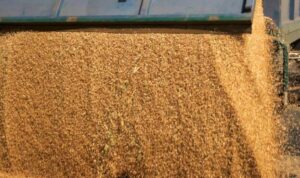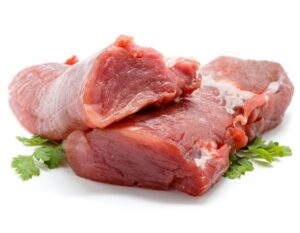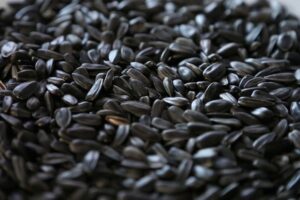
India imported $6.15 billion worth of gold in February 2023, according to the country’s Ministry of Commerce and Industry.
This is 2.3 times more than in February last year, 3.2 times more than in January this year and in general about twice the traditional average monthly levels.
That said, India Bullion and Jewellers Association president Prithviraj Kothari predicts that imports may not be significant in March due to record high gold prices. “Consumers cannot digest the current price level. If prices remain this high, it will affect demand in the current wedding season,” he told Reuters. – It makes no sense for banks and refiners to import.”
In January-February, India’s gold imports totaled $8.06 billion, 2.4 times the result of the corresponding period last year.
By the end of 2023, India imported almost 744 tons of gold worth $42.58 billion. In physical terms, the volume increased by 4%, in value terms – by 16%.
India is one of the largest consumers of gold in the world, practically not producing it itself.
Earlier, the analytical center Experts Club presented an overview of world economies over the past decades. More video analysis is available here – https://youtu.be/w5fF_GYyrIc?si=vsiB0zGYh0NI2tu0

In 2023, Ukraine reduced imports of coke and semi-coke in physical terms by 8.5% compared to 2022, to 328.697 thousand tons.
According to statistics released by the State Customs Service (SCS), coke imports in monetary terms decreased by 25.8% to $129.472 million during this period.
In 2023, Ukraine exported 3,383 thousand tons of coke, down 12.3% from 2022. In monetary terms, it decreased by 22.2% to $787 thousand.
Exports were carried out to Moldova (100% of supplies in monetary terms), while imports were mainly from Poland (88.47%), Colombia (7.72%) and the Czech Republic (3.15%).
As reported, in 2022, Ukraine reduced exports of coke and semi-coke in physical terms by 98% compared to the previous year – to 3,856 thousand tons, and in monetary terms by 97.6% – to $1,011 million. The main exports were made to Hungary (42.63% of supplies in monetary terms), Georgia (37.69%) and Turkey (17.41%).
In 2022, Ukraine imported 359.192 thousand tons of coke and semi-coke, which is 54.5% less than in 2021. In monetary terms, imports decreased by 50.3% to $174.499 million. Imports were carried out mainly from the Russian Federation (43.43% of supplies in monetary terms, before the war), Poland (30.07%) and the Czech Republic (13.15%).
As a result of the war, a number of mines and coke plants are located in the territories temporarily not controlled by Ukraine.

If necessary, Poland will impose a unilateral ban on imports of Ukrainian grain after September 15, while the transit of goods will be maintained, Agriculture Minister Robert Telusz told Polsat News at a press conference on Tuesday.
He denied media reports that a split in the coalition of countries banning Ukrainian grain imports had occurred and that the number of EU member states opposing Poland’s position on extending restrictive measures after September 15 had increased from 13 to 20.
“This is the first time I’ve heard that more countries are against it. I have talked to many ministers from the European Union about this. I see an understanding that we need to build a coalition. We have to build a mechanism. I am convinced that Romania is a member of the coalition,” Telusz was quoted as saying by the Polish publication farmer.pl.
He also said that next week he will hold talks with representatives of Slovakia to determine together “in which direction we will move.”
“At the moment, I have no doubt that there is a coalition,” Telusz assured.
The Polish minister emphasized that keeping the ban on the import of Ukrainian grain only until September 15 is “a political argument to further destabilize the situation in Poland.”
“We will not allow this,” he assured.
The Polish government wants this issue to be resolved “amicably in the European Union, so that there is no need to break down the door.”
“If it is necessary (…) to introduce unilateral bans, we will introduce them, because we are concerned about the interests of farmers (…), and there is no discussion on this topic,” Telusz stated.
Answering a question about possible risks of penalties being imposed on Poland if it violates the rules of the single market, the Minister said that “I don’t want to hear how we, the Poles, are being scared by fines (…)” and added that Poland “will pursue a tough policy in the interests of the Poles.”
Telusz said that Poland is in dialogue with Ukraine, Lithuania, and Latvia to transit grain through Poland.
“We are in dialogue with Ukraine, as well as with Lithuania and Latvia, to use their ports,” he said, and assured that the grain that leaves Poland does not return.
“If we are talking about the food security of Poland, the food security of Europe, then the grain must flow to Europe and must flow outside of Europe. We will help you on the way,” the head of the Polish Ministry of Agriculture said.
According to him, before the ban on the import of Ukrainian grain, about 114 thousand tons of grain entered Poland in transit, and in June – 260 thousand tons. At the same time, about 6 million tons of grain “left” Poland. Poland has about 3-4 million tons of grain left, “but this is a reserve that should always be there,” as the monthly demand for it is 2.5 million tons, the Polish Minister of Agriculture explained.
On June 5, the European Commission agreed to extend until September 15 the restrictions on exports of wheat, corn, rapeseed and sunflower from Ukraine to Bulgaria, Hungary, Poland, Romania and Slovakia. “The restrictions do not imply a ban on the transit of these goods through Bulgaria, Hungary, Poland, Romania and Slovakia,” reads the document signed by EC President Ursula von der Leyen.

The Eastern Interregional Main Department of the State Service of Ukraine for Food Safety and Consumer Protection has announced the introduction of restrictions on imports of hatching eggs, poultry and poultry products from the Republic of Poland to Ukraine due to the registration of Newcastle disease in the country, the press service of the agency said.
According to the order of the Chief State Veterinary Inspector of Ukraine dated July 13, 2023, the ban does not apply to products that have been treated by a method that guarantees the destruction of the causative agent of this disease according to the requirements for the import (transfer) to the customs territory of Ukraine of food products of animal origin, feed, hay, straw, as well as by-products of animal origin and products of their processing, processing, approved by the order of the Ministry of Agrarian Policy and Food № 553 of November 16, 2018 year
Newcastle disease is known as pseudoplague of birds, or Asian plague – a contagious and fatal viral disease affecting all types of birds (chickens, pigeons, turkey, etc.). One of the most contagious poultry diseases in the world, caused by a virus of the Paramyxoviridae family, in which many birds die without showing any symptoms. Pseudorabies plague can cause death even in vaccinated poultry.
According to Polish media reports, the disease was detected for the first time in 50 years at a poultry farm in Bialystok district, where 43.41 thousand chickens are kept for slaughter.

Ukraine in January-June reduced imports of fresh, chilled and frozen pork by 5.5 times, to 5.7 thousand tons compared to the same period last year, the Association “Pig Breeders of Ukraine” (ASU) said with reference to customs statistics.
“Last year there were many incentives to revive import activity: at the beginning of the year – the divergence of domestic and European quotations for pork, in the second quarter – tax incentives for certain groups of importers. This was layered on top of problems related to the disruption of supply chains, in particular the occupation of a large part of the country,” ACU explained.
According to analysts, the current rate of pork imports is the lowest in the last 6 years, it is significantly behind the previous year. Thus, during the first half of 2023, Ukraine imported 5.7 thousand tons of pork from abroad against more than 31 thousand tons in the first half of 2022.
The main reason for the weakening of import activity in the industry association names the strengthening of prices for pork in Europe, which remains the main supplier of these products to Ukraine.
“Although the EU pork market occasionally experiences negative price fluctuations (in particular those recorded in May), they are not protracted and mostly remain at a high level. This significantly limits the capacity of Ukrainian importers and a list of commodity positions, “passable” for the domestic market of meat “- stated in the message.
It is noted that in June 2023, the price of an imported kilogram primarily ranged in the range $2.28-2.99, and the weighted average was 2.56 $ / kg, whereas a year ago the bulk of pork imports came at $ 1.89-2.55 $ / kg, or an average of $ 2.21 / kg.
“Recently, from abroad comes mostly “budget” raw materials, which almost does not compete with domestic chilled pork, while the volume of imports remain quite “modest”, despite their increase in June”, – summed up the association.

Ukraine benefits from the EU ban on the import of sunflower seeds to five neighboring countries, as domestic oil extraction plants are not sufficiently supplied with raw materials and are constantly experiencing a shortage, Stepan Kapshuk, director general of the Ukroliaprom association, told Interfax-Ukraine.
“Before the war there were 108 oil plants in Ukraine. Altogether they could produce 24 million tons of oil, of which 10 million tons were sunflower oil. However, these plants never managed to work at full capacity because of the lack of raw materials, which Ukraine exported. In the best seasons oil extraction plants managed to get 19 million tons of oil”, – explained the head of the industry association.
He said that previously the potential of Ukrainian oil extraction plants could produce 40-50 tons of oil per day. Because of the military actions in Ukraine stopped working about a dozen large operators, so daily plants produce 35 thousand tons of oil.
Kapshuk reminded that Ukroliaprom does not prevent the export of sunflower seeds, but proposes to introduce a mechanism of additional collection, in particular, export quotas.
“Now is the optimal moment for the government to take such a decision. Such a mechanism will bring about 3 billion UAH to the state budget, which can be used to pay salaries to the military,” – he stressed and said that the association has sent the relevant proposals to the Prime Minister.
Commenting on the agreement between the Ministry of Agrarian Policy of Ukraine and the Ministry of Agriculture of Bulgaria on signing a memorandum on sunflower oil, Kapshuk said that such a decision was caused by Bulgaria’s increase in its own production of sunflower oil.
According to his information, in recent years the number of oil extraction plants in Bulgaria has increased from 4 to 11. Last year the Bulgarian processors were able to buy Ukrainian sunflower seeds at affordable prices and increased the production of oil up to 250-300 thousand tons with the internal demand of about 150 thousand tons.
“They need to sell their own goods both on the domestic market and increase their exports,” explained the head of the industry association.
According to Kapshuk, Ukraine used to export butter to 124 countries. In recent years the geography of exports is narrowing and Ukrainian butter is sold to about 80 countries. Its main buyers are India, China, Europe and African countries.
The head of Ukroliaprom cited the experience of Ukroliaproduct ALC (Dikanka TM), which has established air shipments of organic sunflower oil to America, as a positive example of exporting to long distances.
At the same time, Kapshuk pointed out that Ukraine is actively pushed out of the Indian market by the Russian Federation, which has increased production of sunflower.
“It is not profitable for Ukraine to export oil over long distances because of high freight prices. It reaches $370 (probably per ton) on shipments to India alone. Therefore, exports to countries with a high number of Ukrainian diaspora is not profitable for our producers so far,” he said, stressing the importance of maintaining traditional markets for oil.